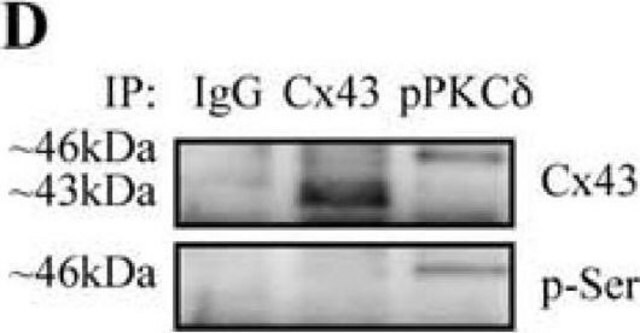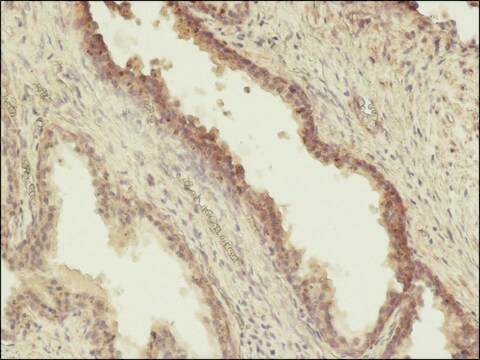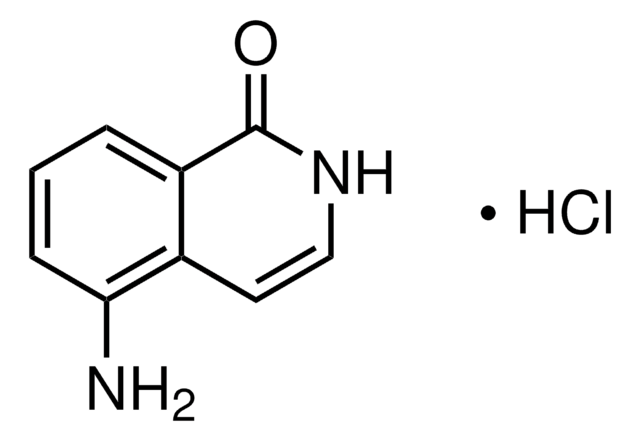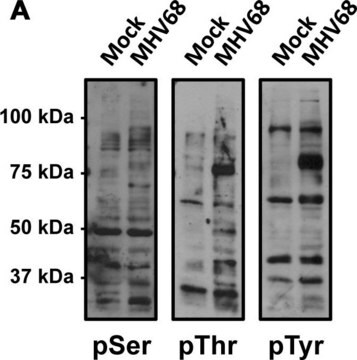A8076
Monoclonal Anti-Phosphoserine−Agarose antibody produced in mouse
clone PSR-45, purified immunoglobulin, buffered aqueous solution
Sinónimos:
Monoclonal Anti-Phosphoserine, Phospho Ser, Phospho serine, Phospho−Ser, Phospho−serine
About This Item
Productos recomendados
origen biológico
mouse
Nivel de calidad
conjugado
agarose conjugate
forma del anticuerpo
purified immunoglobulin
tipo de anticuerpo
primary antibodies
clon
PSR-45, monoclonal
formulario
buffered aqueous solution
técnicas
immunoprecipitation (IP): suitable
isotipo
IgG1
Condiciones de envío
wet ice
temp. de almacenamiento
2-8°C
modificación del objetivo postraduccional
unmodified
Descripción general
Especificidad
Inmunógeno
Aplicación
Acciones bioquímicas o fisiológicas
Monoclonal Anti-Phosphoserine may be used for the identification of proteins containing phosphorylated serine both as the free amino acid or when conjugated to carriers such as BSA or KLH. It does not react with non-phosphorylated serine, phosphorylated tyrosine or threonine, AMP or ATP.
Forma física
Cláusula de descargo de responsabilidad
¿No encuentra el producto adecuado?
Pruebe nuestro Herramienta de selección de productos.
Código de clase de almacenamiento
10 - Combustible liquids
Clase de riesgo para el agua (WGK)
WGK 3
Punto de inflamabilidad (°F)
Not applicable
Punto de inflamabilidad (°C)
Not applicable
Certificados de análisis (COA)
Busque Certificados de análisis (COA) introduciendo el número de lote del producto. Los números de lote se encuentran en la etiqueta del producto después de las palabras «Lot» o «Batch»
¿Ya tiene este producto?
Encuentre la documentación para los productos que ha comprado recientemente en la Biblioteca de documentos.
Nuestro equipo de científicos tiene experiencia en todas las áreas de investigación: Ciencias de la vida, Ciencia de los materiales, Síntesis química, Cromatografía, Analítica y muchas otras.
Póngase en contacto con el Servicio técnico





